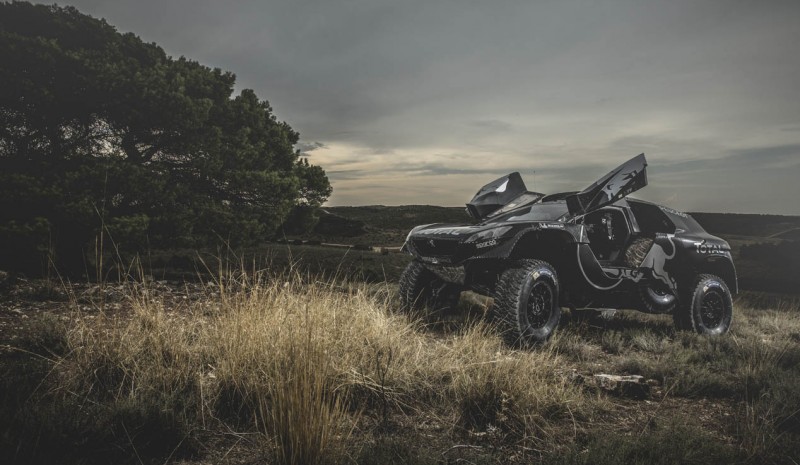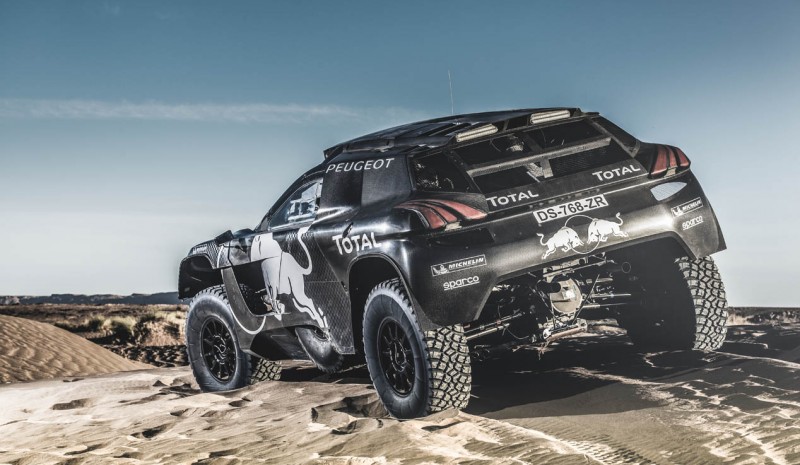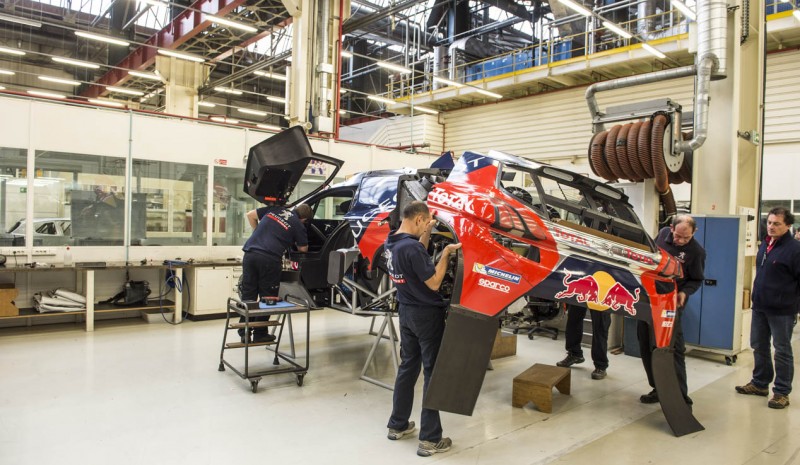Peugeot 2008 DKR, the Mini rival car in the Dakar 2016
The Peugeot 2008 DKR has undergone a tremendous evolution, necessary for Carlos Sainz in the Dakar have options to the Mini 2016, reigning champions.



Peugeot has taken seriously this the Dakar, something we can see in the many changes that have undergone the Peugeot 2008 DKR 2016, a car that, according to the words of Carlos Sainz, “He born bad”. They lost track a long time (about two seconds per kilometer) and it was practically impossible to attack cornering because “with the other (2015), quickly, you tended to dump”.
This year the official Peugeot drivers will Carlos Sainz, Sebastién Loeb, Stéphane Peterhansel Y Cyril Despres. Romain Dumas compete with Peugeot 2008 DKR 2015, but in no case is an official driver of the brand, but will have sold one unit (of old) as an exceptional case.
Carlos Sainz: “We are not talking about an evolution, but a revolution, with all respect to Bruno Flamin (director of Peugeot Sport)”.
The Spanish rider has shown this year pleased with the work that has been done, both in terms of tests and in terms of profound changes in the design and mechanics. Although Sainz recognizes that “the change of course can not be very favorable. The first days are faster and more favorable for 4×4 “stages. Peugeot will have to wait til broken and sand tracks. The tip speed and power is what penalizes them against competitors behind the wheel of the Mini or Toyota, for example. Yes, Carlos believes that “people a less tough race, the lack of Peru is expected but I think Titian (Tiziano Silviero, one of those responsible for creating the route of the Dakar 2016) we expect a tour quite encerronas “.
Part of the interview with Carlos Sainz.
Changes in the Peugeot 2008 DKR 2016
With the base of the Peugeot 2008 DKR 2015, the division Peugeot Sport He has worked hard to give a completely new car. At first glance, he looks ‘more car’, something that is clear as they start to tell at the headquarters everything has changed in just one year.
The structure of the car has changed. It has grown 20 cm in width and 20 cm along. This allows to carry out a better weight distribution inside the vehicle. The fuel tank does not pass above the engine and wheel assemblies parts are no longer one in front and the other behind, but are located one on each side of Peugeot 2008 DKR 2016.
The engine remains the Diesel 3.0 V6 biturbo, but the power has increased from 340 to the 350 hp. In addition to increased power, Carlos Sainz said modifications vital, as both turbochargers do not always act simultaneously but one of them works only up to 2,000 RPM, above this system, opening a valve and allowing the second turbo blow beside the first. The transmission remains the six-speed sequential, enclosed in a block arriving bars dampers, this year are two wheel and complete with a spring; a conventional suspension (450mm) than type ‘F1’ used in 2015. clutch, in turn, it is connected to the gearbox, situated in a strategic position to be extracted in case of failure and replaced by a new one in an estimated 5 to 10 minutes.
The weight of the whole Peugeot 2008 DKR 2016 He has declined, although Carlos Sainz itself recognizes that it is very difficult to stay at the minimum weight allowed by the organization for buggies 4×2 (about 1,400 kg).
Among the parts leading the race, we found two wheel assemblies, steering rods, bars buffer and a transmission, the latter required in this type of cars that are not 4×4, since breakage prevent them from continuing and would have to withdraw .
Peugeot 2008 DKR tire, key developments
He Michelin used for Peugeot 2008 DKR 2016 It has a completely new design. It was a personal battle of Carlos Sainz, if last year was not happy with the car in general, the tire worst feelings were what passed him. The above came with characteristics of the Baja 1000, which are mounted on the bestial Trophy Truck, quite faster and heavier than Peugeot buggy. In this car, driving it was hard and heavy, with no possibility of attacking curved by the lack of lateral stability. To be clear, the car tended to dump in closed and high-speed curves.
With the insistence of Carlos, it has managed to get on the wheel, 37 inches and a diameter of 93 cm, it has modified tread pattern, now type ‘rally’ and less heavy. The tire is much narrower, weighs less and almost 8 kg the height of the studs is greater. Improved lateral grip, the overall stability and braking. Although the tests conducted, fear of the team goes through step 6 Uyuni-Uyuni, with 542 km special. If it becomes a slow running (with many strong braking and accelerations), gum suffers too, especially in rear-wheel drive cars.
Wheel changes have been solved with a protective piece located above the area of the rim screw. A person can support the wheel at that point and into position, without having to hold the full weight during the process. The rim itself incorporates in its central part, a inflation and deflation valve tires, a move that buggies can be done without leaving the car.
You may also like
Sebastién Loeb will drive a Peugeot in the Dakar 2016
Sebastién Loeb interviewed during the WTCC
Peru is leaving the Dakar 2016 calendar
The electric car that Acciona wants to finish the Dakar 2016




